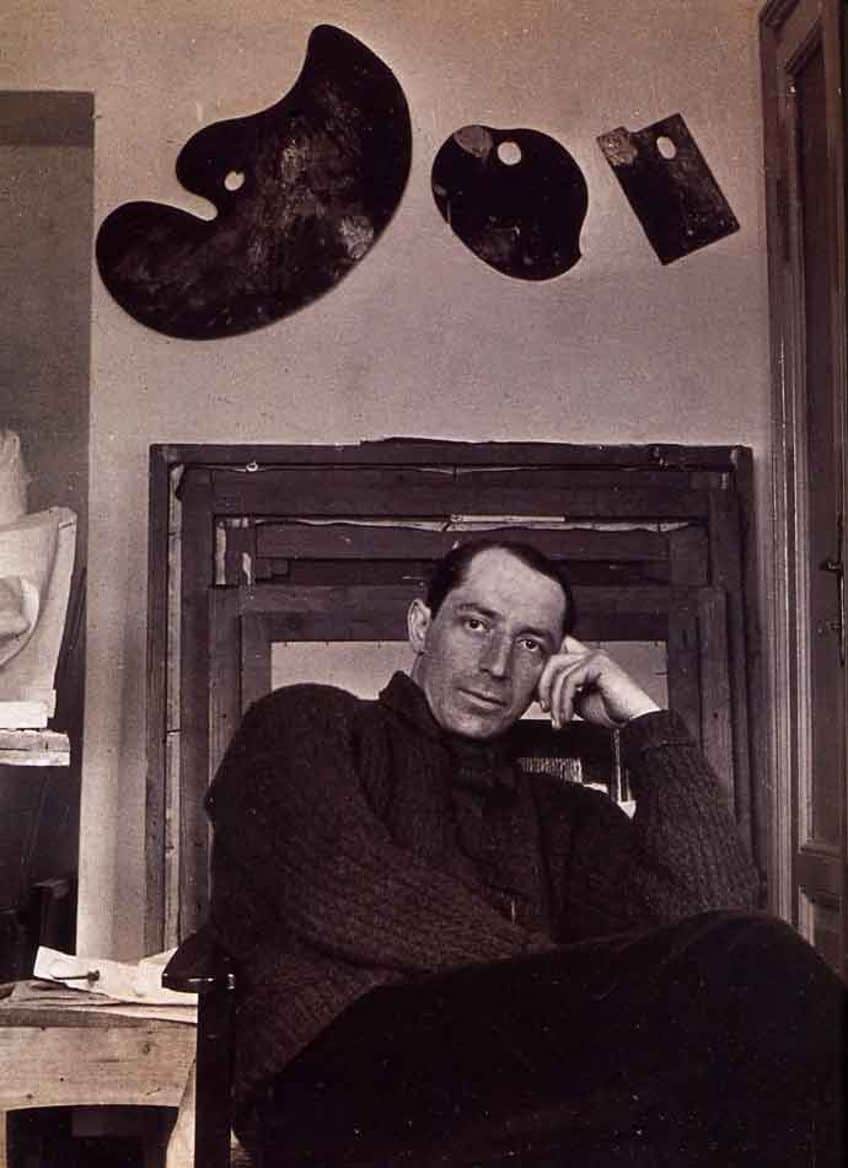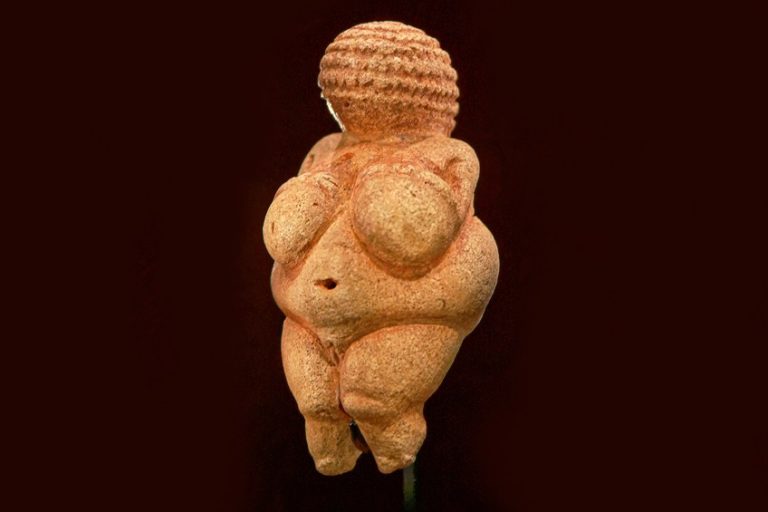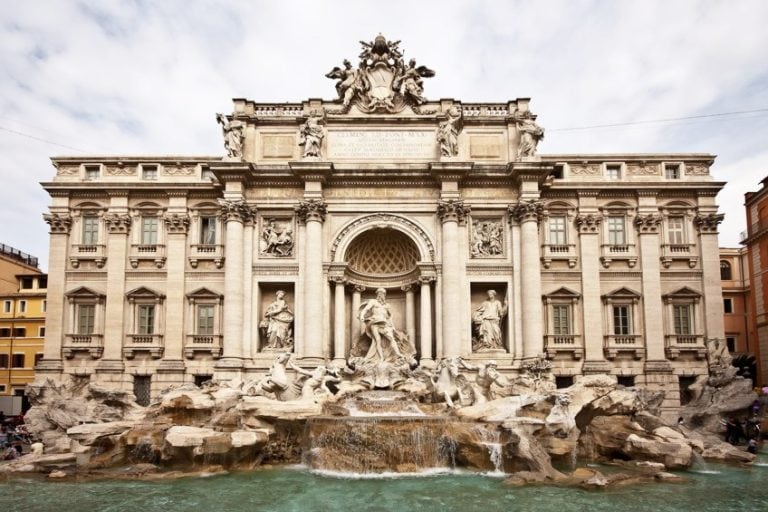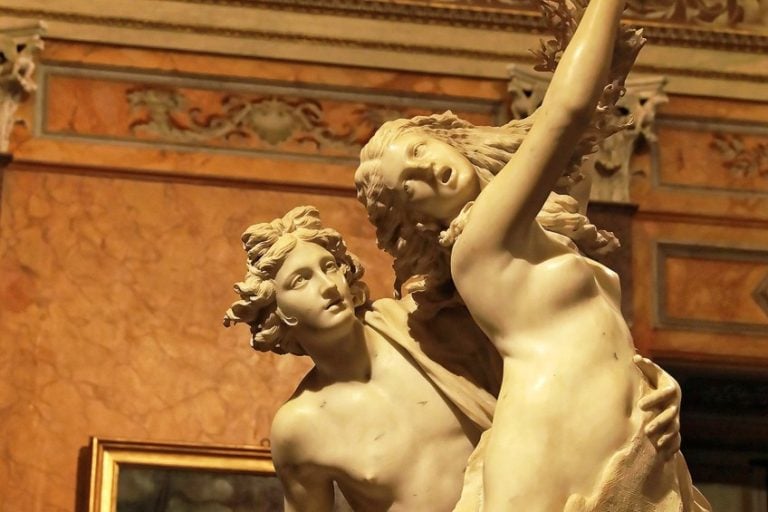“Unique Forms of Continuity in Space” by Umberto Boccioni
Unique Forms of Continuity in Space, created by Italian Futurist Umberto Boccioni in 1913, stands as a groundbreaking sculpture that epitomizes the movement’s embrace of dynamism, speed, and modernity. Cast in bronze, this masterpiece captures the essence of movement through its fluid, almost aerodynamic forms, reflecting the Futurists’ fascination with technology and progress. Boccioni’s work transcends the traditional boundaries of sculpture, presenting a figure that seems to stride energetically into the future, its contours blurred by motion. Celebrated as an icon of early 20th-century avant-garde art, Unique Forms of Continuity in Space remains a powerful symbol of the Futurist vision of a transformed, mechanized world.
Key Takeaways
- Unique Forms of Continuity in Space captures the essence of movement and fluidity.
- Boccioni’s work broke away from traditional styles, emphasizing modern dynamism.
- The sculpture remains influential and is featured on the Italian 20-cent euro coin.
Umberto Boccioni and the Birth of Futurist Sculpture
| Artist | Umberto Boccioni (1882 – 1916) |
| Date Created | 1913 |
| Medium | Bronze |
| Genre | Sculpture |
| Period/Movement | Futurism |
| Dimensions (cm) | 111.4 × 88.5 × 40 |
| Series/Versions | Multiple casts made; original plaster and several bronze versions |
| Where Is It Housed? | Museu de Arte Contemporânea da Universidade de São Paulo, São Paulo, Brazil (original plaster) |
| What It Is Worth | High historical and artistic value; bronze versions have sold for millions at auction |
Umberto Boccioni’s Unique Forms of Continuity in Space is a key work in the Futurist movement, created in 1913. This sculpture captures the essence of movement and fluidity, embodying the dynamism that the Futurists celebrated. It breaks away from traditional art, showcasing a figure that seems to be striding forward, almost merging with space itself.

Boccioni, an influential Italian artist, sought to represent the energy of modern life through his work. His background as a painter influenced his sculptural techniques, allowing him to successfully translate the concept of speed and motion into a static medium. The sculpture’s bold, sweeping forms reflect the artist’s interest in progressing beyond the classic and Renaissance art styles. Today, Unique Forms of Continuity in Space remains significant. It continues to inspire contemporary artists and is often featured in discussions about the evolution of modern sculpture. The piece also graces the obverse of the Italian 20-cent euro coin, symbolizing its lasting impact.
A Brief Biography of Boccioni
Umberto Boccioni was born in 1882 in Italy. He started his artistic journey in Milan and later moved to Paris to further his education. Influenced by the modern art scene in Paris, Boccioni became a leading figure in the Italian Futurist movement. His early works included paintings, but he soon turned to sculpture to better express the dynamics of modern life. Boccioni believed that traditional art forms were outdated and needed a radical transformation.
His artistic career was cut short when he died in 1916 during World War I, but his contributions to modern art, especially Futurist sculpture, have had a lasting impact.
The Founding and Manifesto of Futurism
Futurism was founded by F.T. Marinetti in 1909 with the publication of the Futurist Manifesto. This movement aimed to break away from the past and glorified modernity, speed, and technology. Marinetti’s ideas resonated with young artists like Boccioni and led to the establishment of a new artistic genre that sought to capture the dynamism of modern life. Futurism was not limited to visual arts but also influenced literature, music, and architecture. It promoted the rejection of traditional forms and embraced innovation. Boccioni quickly became a prominent figure in the movement, helping to shape its direction and philosophy through his revolutionary ideas and works.

Technical Manifesto of Futurist Sculpture
In 1912, Boccioni co-wrote the Technical Manifesto of Futurist Sculpture. This document outlined the principles that would guide Futurist sculptors in their quest to create art that expressed movement, energy, and modernity. It called for artists to reject static forms and instead focus on dynamic motion and the interaction between objects and space. Boccioni’s Unique Forms of Continuity in Space is a prime example of these ideas in action. The sculpture emphasizes fluidity and motion, breaking free from the traditional constraints of sculpture.
By synthesizing different positions into a single form, Boccioni captured the essence of the Futurist ambition to depict the speed and dynamism of contemporary life.
Analyzing Unique Forms of Continuity in Space
Unique Forms of Continuity in Space by Umberto Boccioni captures the essence of movement and dynamism. It utilizes bronze to express fluidity and forward motion, reflecting the principles of Futurism.

Anatomy of the Sculpture
The sculpture measures 111.4 x 88.5 x 40 cm and is made of bronze. It depicts a human-like figure in mid-stride, which conveys a sense of speed and motion. The lack of arms and the abstract forms enhance the impression of movement. Its surface is smooth, with undulating forms suggesting air and space swirling around the figure.
The futuristic design makes it distinct from traditional sculptures.

Concept of Dynamism and Movement
Boccioni’s work aims to break away from classical and Renaissance styles. Instead, it focuses on the dynamism of modern life. The dynamic forms and flowing lines give the impression that the figure is moving through space. The sculpture embodies the principles of the Futurist movement, emphasizing speed, technology, and change.
Through its exaggerated posture and flowing design, it captures the essence of synthetic continuity and movement.

Symbolism and Interpretation
The sculpture’s abstract elements and forward motion symbolize modernity and progress. It represents a break from traditional art, embracing the concepts of speed and transformation. The depiction of the figure aligns with the Futurists’ vision of humanity moving forward in a rapidly changing world. The swirling forms can be seen as a metaphor for the endless possibilities of the future.
Through this piece, Boccioni encapsulates the spirit of the early 20th century, reflecting a fascination with technology and the energy of modern life.

Influence of Unique Forms of Continuity in Space Today
Unique Forms of Continuity in Space still inspires artists and thinkers worldwide. Boccioni’s sculpture, with its fluid lines and sense of movement, remains a powerful example of Futurist art. Modern art often draws from Boccioni’s work. The sculpture’s emphasis on speed and motion can be seen in contemporary design, visual art, and even fashion. Many public art installations and museum exhibits echo the dynamic forms seen in Boccioni’s piece.
These installations aim to capture the energy of modern life, much like Boccioni intended.
Artists inspired by Futurism often reference Unique Forms of Continuity in Space in their own work. This can be seen in sculptures highlighting motion, fluidity, and the blending of human and machine elements. Boccioni’s idea of synthesizing movement into a single form influences graphic design and animation, where creators seek to depict fluid motion in static images.

The sculpture’s presence on the Italian 20-cent euro coin shows its significance in cultural heritage. It is not just an art piece but a symbol of innovation and progress. Boccioni’s influence can also be traced in academic discussions and artistic studies, where his techniques and vision continue to be a subject of analysis and admiration.
Umberto Boccioni’s Unique Forms of Continuity in Space is not merely a sculpture but a manifesto of the Futurist movement’s core ideals. Its innovative depiction of motion and modernity encapsulates the radical shift in artistic expression during the early 20th century. Boccioni’s ability to convey speed and transformation through dynamic, flowing forms revolutionized the perception of sculpture, leaving an indelible mark on the art world. Today, this iconic piece continues to inspire and challenge viewers, embodying the relentless forward march of innovation and the Futurists’ visionary zeal for a mechanized future.
Frequently Asked Questions
What Is the Significance of the Dynamic Motion Represented in the Sculpture?
The sculpture portrays a figure in mid-stride, emphasizing movement and energy. This dynamic motion is a central theme in Futurism, which sought to represent the vitality of the modern age. The swirling forms and flowing lines express speed and fluidity, making the sculpture seem alive despite being static.
How Did the Creation Process of the Sculpture Contribute to Its Meaning?
Boccioni initially worked as a painter before exploring sculpture. This transition allowed him to experiment with form and space in ways that painting could not. The bronze material and the techniques he used added texture and weight, further enhancing the sense of motion. The casting in the 1930s preserved and immortalized these aspects.
What Elements Define the Sculpture as a Quintessential Example of Futurism?
The sculpture rejects classical static poses, embracing modern industrial aesthetics instead. Its fragmented forms and emphasis on kinetic energy exemplify Futurist ideals. Boccioni’s use of unconventional shapes and the representation of speed align with the movement’s goal to break away from traditional art conventions and celebrate progress and innovation.
Isabella studied at the University of Cape Town in South Africa and graduated with a Bachelor of Arts majoring in English Literature & Language and Psychology. Throughout her undergraduate years, she took Art History as an additional subject and absolutely loved it. Building on from her art history knowledge that began in high school, art has always been a particular area of fascination for her. From learning about artworks previously unknown to her, or sharpening her existing understanding of specific works, the ability to continue learning within this interesting sphere excites her greatly.
Her focal points of interest in art history encompass profiling specific artists and art movements, as it is these areas where she is able to really dig deep into the rich narrative of the art world. Additionally, she particularly enjoys exploring the different artistic styles of the 20th century, as well as the important impact that female artists have had on the development of art history.
Learn more about Isabella Meyer and the Art in Context Team.
Cite this Article
Isabella, Meyer, ““Unique Forms of Continuity in Space” by Umberto Boccioni.” Art in Context. June 24, 2024. URL: https://artincontext.org/unique-forms-of-continuity-in-space-by-umberto-boccioni/
Meyer, I. (2024, 24 June). “Unique Forms of Continuity in Space” by Umberto Boccioni. Art in Context. https://artincontext.org/unique-forms-of-continuity-in-space-by-umberto-boccioni/
Meyer, Isabella. ““Unique Forms of Continuity in Space” by Umberto Boccioni.” Art in Context, June 24, 2024. https://artincontext.org/unique-forms-of-continuity-in-space-by-umberto-boccioni/.











